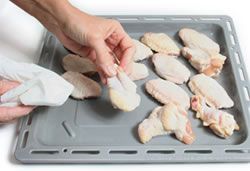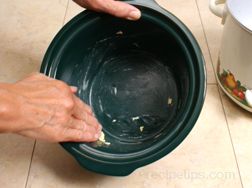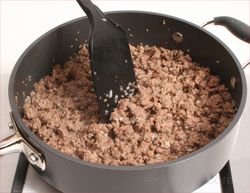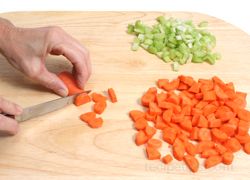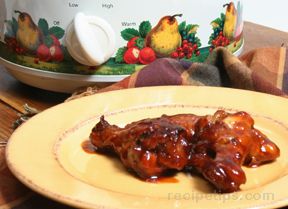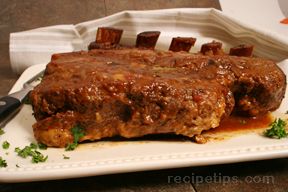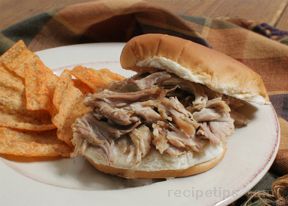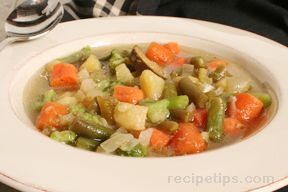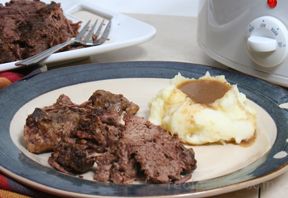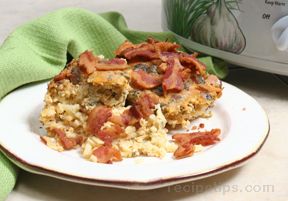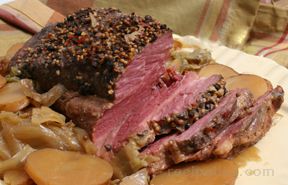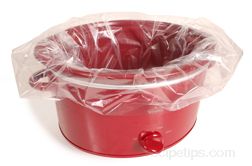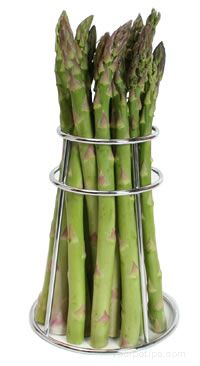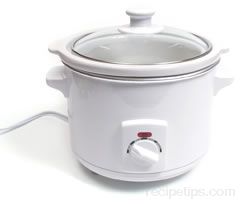|
You can also use traditional recipes and adapt them to be used as slow cooker recipes. The cooking times will vary according to the type of food, amount of food being cooked, the size of pieces, and the type of other ingredients cooked with the food. The information below contains tips and advice on how to adapt traditional recipes and cooking times, along with other slow cooking tips.
| |||||||||||||||||||||||||||||||||||||||||||||||||||||||||||||||||||||||||||||||
| Basic Cooking Times for Slow Cooking | ||
| Food Type | Approximate Cooking Times | |
| Low Setting | High Setting | |
| Roast | 8 to 12 hours | 4 to 6 hours |
| Ribs | 6 to 10 hours | 4 to 6 hours |
| Brisket | 8 to 10 hours | 4 to 5 hours |
| Swiss Steak | 6 to 10 hours | |
| Meat Loaf | 5 to 10 hours | 4 to 6 hours |
| Chicken - Breast | 6 to 8 hours | 3 to 4 hours |
| Chicken - Dark Meat | 8 to 9 hours | 4 to 5 hours |
| Baked Potato | 8 to 10 hours | 4 to 5 hours |
| Baked Sweet Potato | 6 to 8 hours | 3 to 4 hours |
| Vegetables | 2 to 6 hours | 2 to 3 hours |
| Dry Beans (soaked & pre-boiled for 10 to 15 minutes) | 8 to 9 hours | |
| Rice | 4 to 8 hours | 2 to 3 hours |
| Soup | 6 to 10 hours | 3 to 5 hours |
| Stew | 6 to 10 hours | 4 to 6 hours |
| Casseroles | 6 to 10 hours | 3 to 5 hours |
| Note: The times above are estimated times only. The cooking times will vary according to the amount of food being cooked, the size of pieces, and the type of other ingredients cooked with the food. If using a slow cooking recipe, be sure to follow the cooking times suggested in the recipe. | ||
Easy Slow Cooking Recipes
See the recipe sections below for examples of some the different typed of food and dishes that can be prepared in a slow cooker. Each section includes detailed instructions on how to prepare the different types of foods in the slow cooker.
Slow Cooking Appetizers | Slow Cooking Breakfasts | Slow Cooking Side Dishes | Slow Cooking Meats
Slow Cooking Meals | Slow Cooking Soups & Stews | Slow Cooking Desserts
Adapting Traditional Recipes for Slow Cooking
Most traditional recipes can be converted to use as slow cooker recipes. There are some simple guidelines that can be followed to assist in successfully converting some of your favorite recipes. See the guidelines below.
- Select recipes that typically require 45 minutes or more of cooking time. This is an indication that the ingredients should hold up through the long cooking times used for slow cooking.
- Reduce the amount of liquid the recipe calls for by about half. The slow cooking process will produce more liquid during the cooking process and liquid does not boil away with the slow cooking method.
- If the recipe does not include any liquid or sauce of any kind, you should add 1/2 cup of water to the slow cooker because the moisture is needed to produce steam for the slow cooker to reach the appropriate cooking temperatures.
- Browning the meat before adding to the slow cooker will enhance the flavor of the dish.
- If the recipe calls for vegetables, be sure to cut them into consistent size pieces and layer on the bottom of the slow cooker.
- More delicate vegetables, such as tomatoes, peppers, peas, and summer squash should be added towards the end of the cooking time.
- Recipes for soup and stew containing milk, cheese, or other dairy products, should have these ingredients added in the last 30 to 60 minutes of cooking time.
- To avoid rice and pasta from becoming sticky, cook them on the stovetop and add in at the end of the cooking time just long enough for them to be heated thoroughly with the other ingredients. If you want to cook them in the slow cooker, wait until the last 60 to 90 minutes of cooking time to add rice and add pasta in the last 15 to 30 minutes. Be sure to add an extra 1/2 cup of water for every 1/2 cup of rice that is added.
- If at the end of the cooking time you have more liquid than wanted for the dish, drain it into a saucepan and simmer on the stovetop to reduce. Season if necessary and add it back in the slow cooker with the other ingredients.
- Follow the same guidelines used for slow cooking recipes.
Cooking Time Conversion for Adapting Traditional Recipes
When cooking with a slow-cooker, the cooking times will need to be lengthened in comparison to the cooking times for traditional recipes. Be sure to allow enough time for food to be cooked to proper doneness.
| SLOW-COOKER CONVERSION | ||
| This chart provides a conversion from traditional cooking times to slow-cooker cooking times. | ||
| Traditional Cooking Time |
Slow-Cooker Cooking Time | |
| Low (200) | High (300) | |
| 15-30 min |
4-8 hrs |
1 1/2 hrs |
| 35-45 min | 6-10 hrs | 3-4 hrs |
| 50 min-3 hrs | 8-18 hrs | 4-6 hrs |
| Most uncooked meat/poultry and vegetable combinations will require at least 8 hours on low. | ||
Slow Cooking Tips
- Do not use the slow cooker for reheating leftovers. Heat the leftovers to a safe temperature in the microwave, on the stove, or in the oven and then transfer to a slow cooker to keep it warm.
- Cooking for 1 hour on high is equal to 2 hours on low when slow cooking.
- When cooking at high altitudes, be sure to increase cooking times. Increase approximately an additional 30 minutes per 1 hour of suggested cooking time.
- Slow cooking tough cuts of meat on low will provide the most tender results.
- Do not lift the lid while the slow cooker is cooking unless instructed by the recipe. Every time the lid is lifted the cooking time should be increased by 20 minutes. Twisting the lid around, while leaving it on the crock will make the condensation fall off making it easier to see through the cover.
- If not using a slow cooker liner, butter, grease, or use cooking oil spray on the inside of the crock for easier cleanup.
- To reduce the amount of fat in a meat dish, remove any excess fat and remove the skin from poultry.
- To prevent fish and seafood from becoming tough, add them to the dish during the hour of slow cooking time.
- Do not cook frozen meat in the slow cooker because it will take too long for its internal temperature to reach 140°F. The meat could be in the danger zone between 40°F and 140°F for too long and this would allow bacteria more of a chance to grow, possibly causing the meat to be unsafe to eat.
- Placing aluminum foil over the content of the slow cooker or placing it over the top of the crock with the cover placed on top of the foil will speed up the cooking process. Heat that would normally be lost through the cover is reflected back to the food being cooked.







